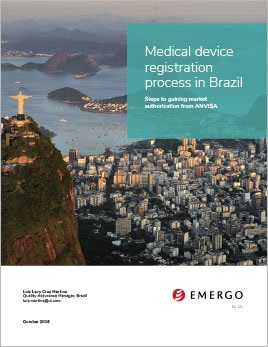Die Medizinprodukte-Branche in Brasilien sah sich in jüngster Vergangenheit einer Reihe von Herausforderungen gegenüber: Ein komplexes regulatorisches Verfahren verursachte Verzögerungen bei den Zulassungen und ein turbulentes ökonomisches und politisches Klima sorgte bei ausländischen Herstellern für Unsicherheiten.
You've done the hard work of classifying your product in the US - now it's time to get FDA clearance and start selling your device. But to sell a class 2 medical device in the US, you must submit a 510(k) to the US FDA. Knowing what to expect from this process can save you time, money, and some unnecessary headaches.
The US FDA medical device classification scheme presents some unique challenges for new technology.
The first major revision to device regulations since 2007 has been released and the changes are significant. Although the MDR won't take effect for a few years, smart companies are planning ahead to beat the crush of companies that will inevitably wait until the last minute, overwhelming EU Notified Bodies.
在欧盟销售的医疗器械需要拥有一个证明其符合欧盟医疗器械法规的CE认证标志。CE标志表明法定制造商已评估器械,并且符合MDR 2017/745下的一般安全和性能要求(GSPR)。法定制造商将验证是否符合所有相关的欧盟要求,并必须在其欧盟符合性声明(DoC)中声明这一点。此外,高风险器械(MDR下的I类无菌、测量或可重复使用的手术器械、IIa类、IIb类和III类器械)需要公告机构的独立评估和认证。通过后,公告机构将签发CE标志证书,确认制造商的质量管理体系(QMS)和技术文件符合欧盟MDR法规。
To see their products to the Chinese market, medical device and IVD manufacturers will need to obtain National Medical Products Administration (NMPA) (formerly China Food and Drug Administration or CFDA) approval.
Interested in selling your medical device in Taiwan? If so, there are important steps you need to follow to comply with medical device regulations in this market. Taiwan has a robust medical device industry with a well established regulatory system, overseen by the Taiwan Food and Drug Administration.
 Interested in selling y
Interested in selling y